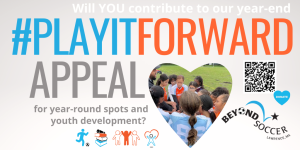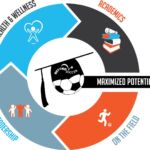Below is credited to a great article http://www.aspenprojectplay.org/the-facts
Facts: Sports Activity and Children
Participation in sports by children and adolescents is associated with a range of documented physical, emotional, social, educational, and other benefits that can last into adulthood. But increasingly, many young people opt out of a sustained experience, while others are locked out due to a lack of resources or access to community programs. Health and other needs go unmet.
The most robust data tracking the sport participation patterns of Americans on an annual basis is produced through a household survey conducted by the Sports & Fitness Industry Association (SFIA). In 2008, 30.2% of youth ages 6 to 12 were active to a healthy level through sports, organized or unstructured; by 2015, that number had dropped to 26.6%, according to SFIA. Among 13- to 17-year-olds, the rate fell from 42.7% to 39.3%.
For the latest data and insights on how well children and communities are being served by youth sports today, see our new Project Play report, State of Play: 2016. It also highlights key developments in the past year in each area of opportunity identified in our 2015 report, Sport for All, Play for Life: A Playbook to Get Every Kid in the Game, along with grades provided by thought leaders at the 2016 Project Play Summit.
Below are facts on the benefits of sport participation, today’s barriers to sport participation, and the consequences of physical inactivity:
Health Benefits
Regular physical activity benefits health in many ways, including helping build and maintain healthy bones, muscles, and joints; helping control weight and reduce fat; and preventing or delaying the development of high blood pressure (GAO, 2012). Exercise is one of the least expensive ways to stay healthy, with one study finding that exercise can prevent chronic diseases as effectively as medication (British Journal of Medicine, 2013). A comprehensive study and analysis of existing research found that leisure-time physical activity is associated with reduced risk of 13 different types of cancer, including breast, colon, liver and myeloid leukemia (National Institutes of Health, 2016).
Sports participation is a significant predictor of young adults’ participation in sports and physical fitness activities. Adolescents who play sports are eight times as likely to be active at age 24 as adolescents who do not play sports (Sports Participation as Predictors of Participation in Sports and Physical Fitness Activities in Young Adulthood, Perkins, 2004). Three-in-four (77%) of adults aged 30+ who play sports today played sports as school-aged children. Only 3% of adults who play sports currently did not play when they were young (Robert Wood Johnson Foundation/Harvard University/NPR, 2015).




